Kid-Friendly Living Room Ideas – 10 Design Tips
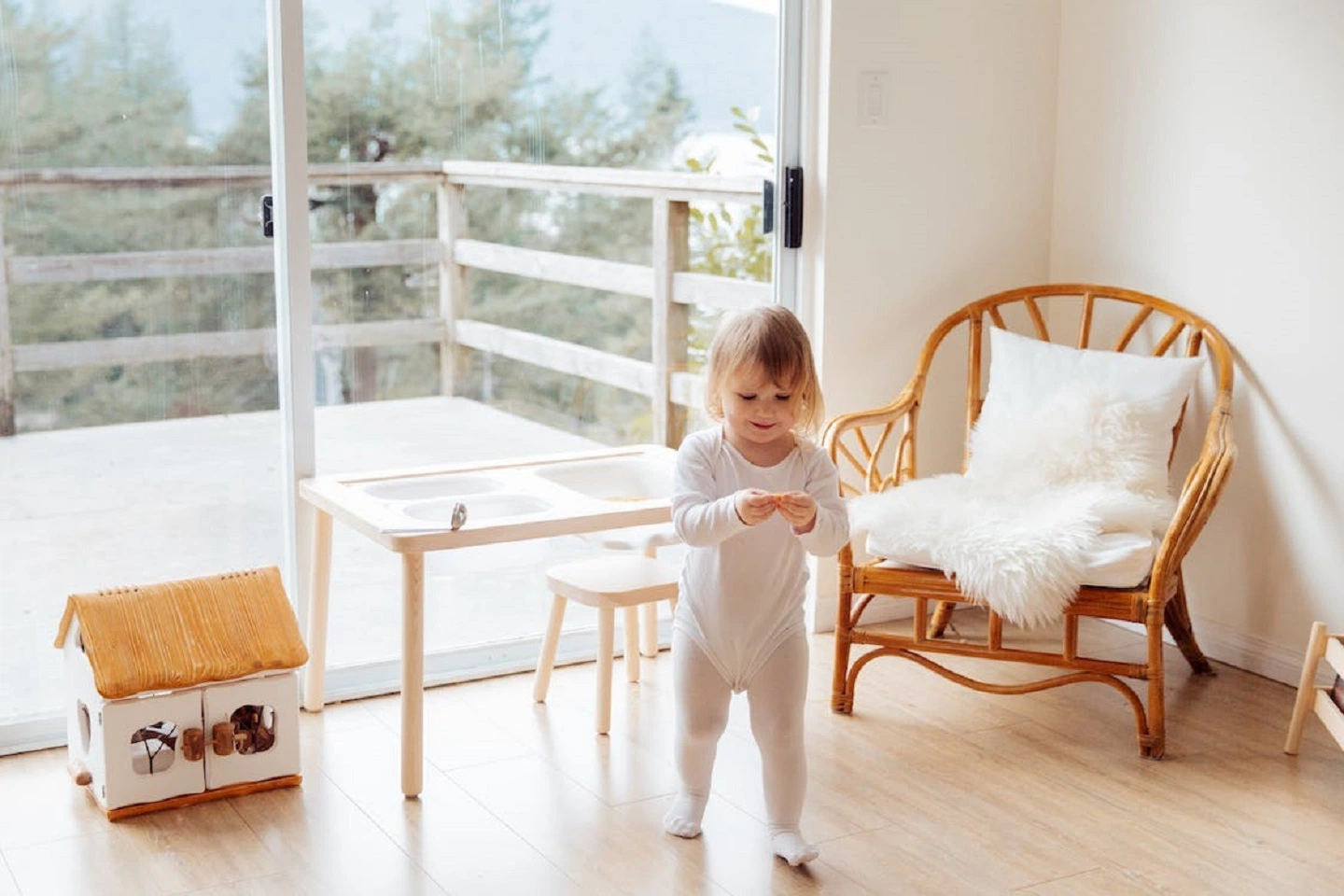
Designing a living room that is both stylish and kid-friendly can be a challenging yet rewarding endeavor in the world of interior design. It’s a space where adults want to relax and entertain, but it’s also where children play, learn, and create memories. Making a balance between aesthetics and functionality is essential to create a living room that works for the entire family. In this article, we will talk about the key principles and design considerations for crafting a kid-friendly living room that is both inviting and practical.
In today’s fast-paced world, where screens often captivate children’s attention, a well-designed, kid-friendly living room can offer a refreshing alternative. It becomes a space where the magic of physical play, artistic expression, and quality family time can unfold. The living room isn’t just a room; it’s a canvas upon which the chapters of family life are written, from cozy storytime sessions to enthusiastic game nights.
The task at hand is to create an environment that seamlessly blends the sophistication of adult aesthetics with the functionality demanded by the lively presence of children.
The intricacies of designing a kid-friendly living room, concepts such as safety, durable materials, functional layout, versatile décor, ample storage, and engaging interactive zones are discussed here. These elements will not only ensure that your living room is safe and practical for children but also stimulate their creativity and make it a space they genuinely love to inhabit. Whether you’re a parent, guardian, or simply someone who values family time and wants a welcoming space for young visitors, this guide will provide you with valuable insights and inspiration for your kid-friendly living room design. So, let’s embark on this delightful journey of creating a space where style and playfulness harmoniously coexist.
Tip: Check out our best living room flooring options for a kid-friendly living room.
1. Safety First
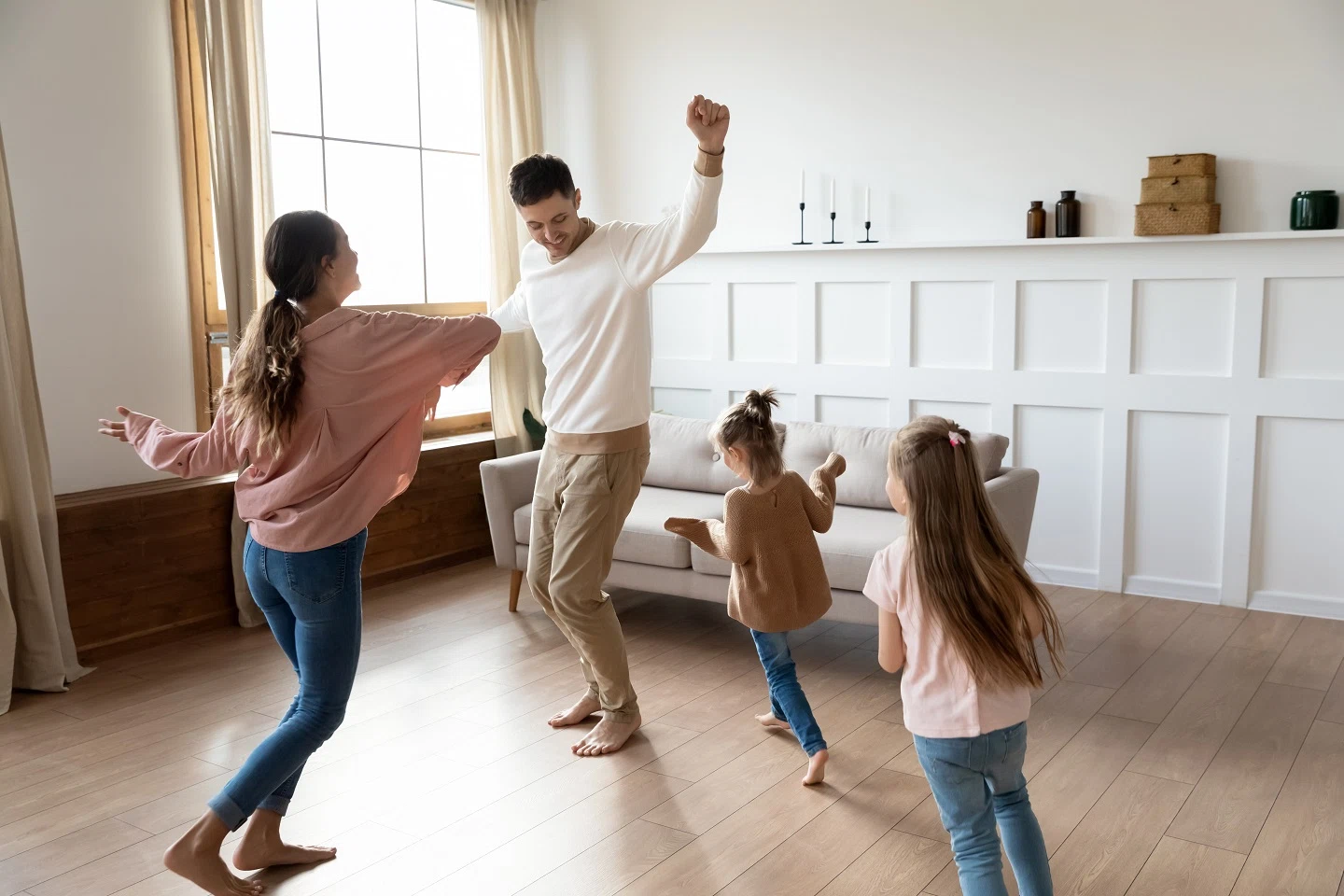
When designing a kid-friendly living room, safety should be the top priority. Here are some safety considerations to keep in mind:
- Childproofing: Install safety gates, outlet covers, and cabinet locks to keep little ones safe from potential hazards. Make sure heavy furniture is securely anchored to the wall to prevent tipping.
- Non-Toxic Materials: Opt for non-toxic paints, finishes, and furnishings to create a healthy environment for children. Avoid materials that may off-gas harmful chemicals.
- Soft Edges: Choose furniture with rounded or soft edges to reduce the risk of bumps and bruises. Sharp corners on tables and shelves can be dangerous for active children.
2. Durable Materials

Kids can be tough on furniture and surfaces, so selecting durable materials is key to a kid-friendly living room:
- Stain-Resistant Fabrics: Consider sofas and chairs upholstered in stain-resistant fabrics like microfiber or leather. These materials are easy to clean and maintain.
- Easy-to-Clean Surfaces: Opt for easy-to-clean surfaces for coffee tables and side tables. Avoid materials that are prone to scratching or staining.
- Rug Choices: If you want to include a rug, choose one made from durable, stain-resistant materials. Low-pile rugs are easier to clean than high-pile ones.
Tip: Explore organic living room ideas if you are interested in the combination of modern décor with organic furniture.
3. Functional Layout

A well-thought-out layout can make a big difference in the usability of your living room for both adults and children:
- Clear Pathways: Ensure there are clear pathways for children to move around safely. Avoid cluttered layouts that can become obstacles.
- Designated Play Areas: Create designated play areas with storage for toys, books, and art supplies. This helps keep the living room organized and encourages independent play.
- Flexible Seating: Consider modular seating options that can be easily rearranged to accommodate different activities and group sizes.
4. Color and Décor
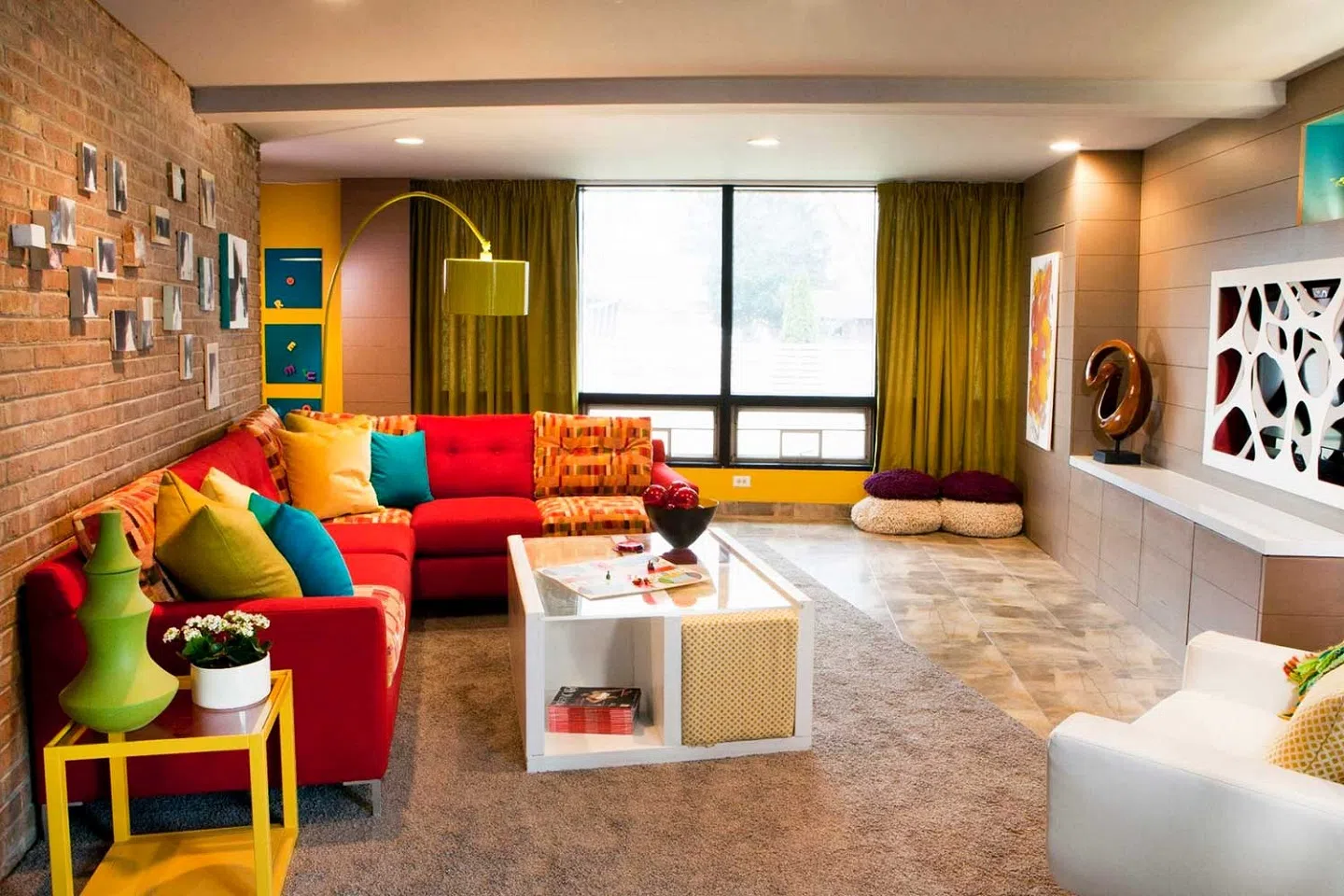
Kid-friendly living rooms can be stylish and fun. Here’s how to incorporate color and décor effectively:
- Neutral Base: Start with a neutral color palette for walls and larger furniture pieces. Neutrals provide a timeless backdrop and allow you to change accents as your child’s tastes evolve.
- Playful Accents: Inject color and personality through accessories like throw pillows, wall art, and rugs. Let your child have a say in choosing some of these elements.
- Educational Décor: Consider educational decors such as wall decals with maps or alphabet prints that can double as learning tools.
If you are interested in colorful interior design, it is highly suggested to take a look at Mexican interior design.
5. Storage Solutions
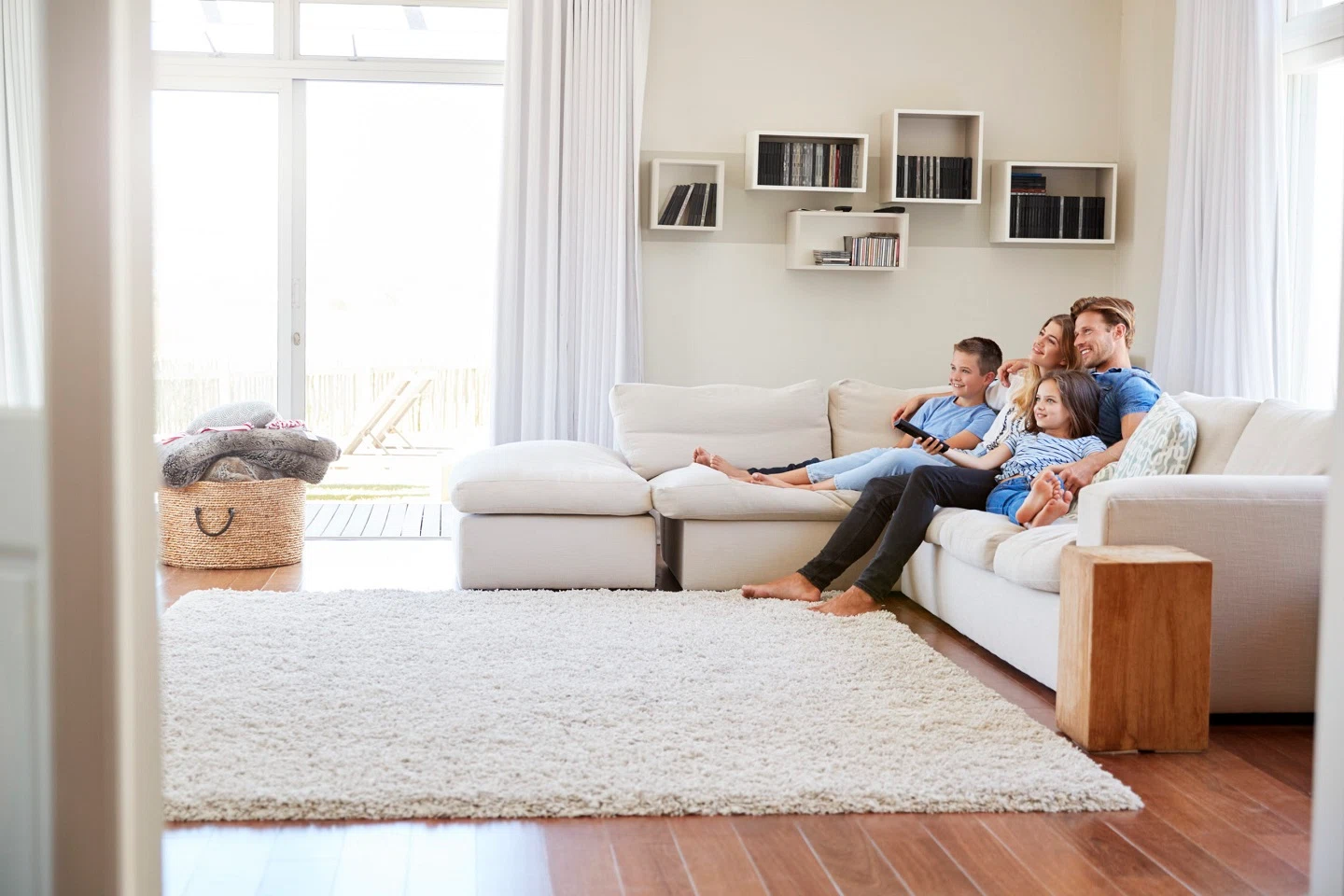
Ample storage is essential to maintain a clutter-free living room:
- Toy Storage: Invest in storage solutions like bins, shelves, and toy chests to keep toys organized and out of sight when not in use.
- Bookshelves: Install low bookshelves within reach of children so they can easily access their favorite books.
- Hidden Storage: Choose furniture with hidden storage compartments to tuck away items like blankets, pillows, and board games.
6. Kid-Friendly Furniture
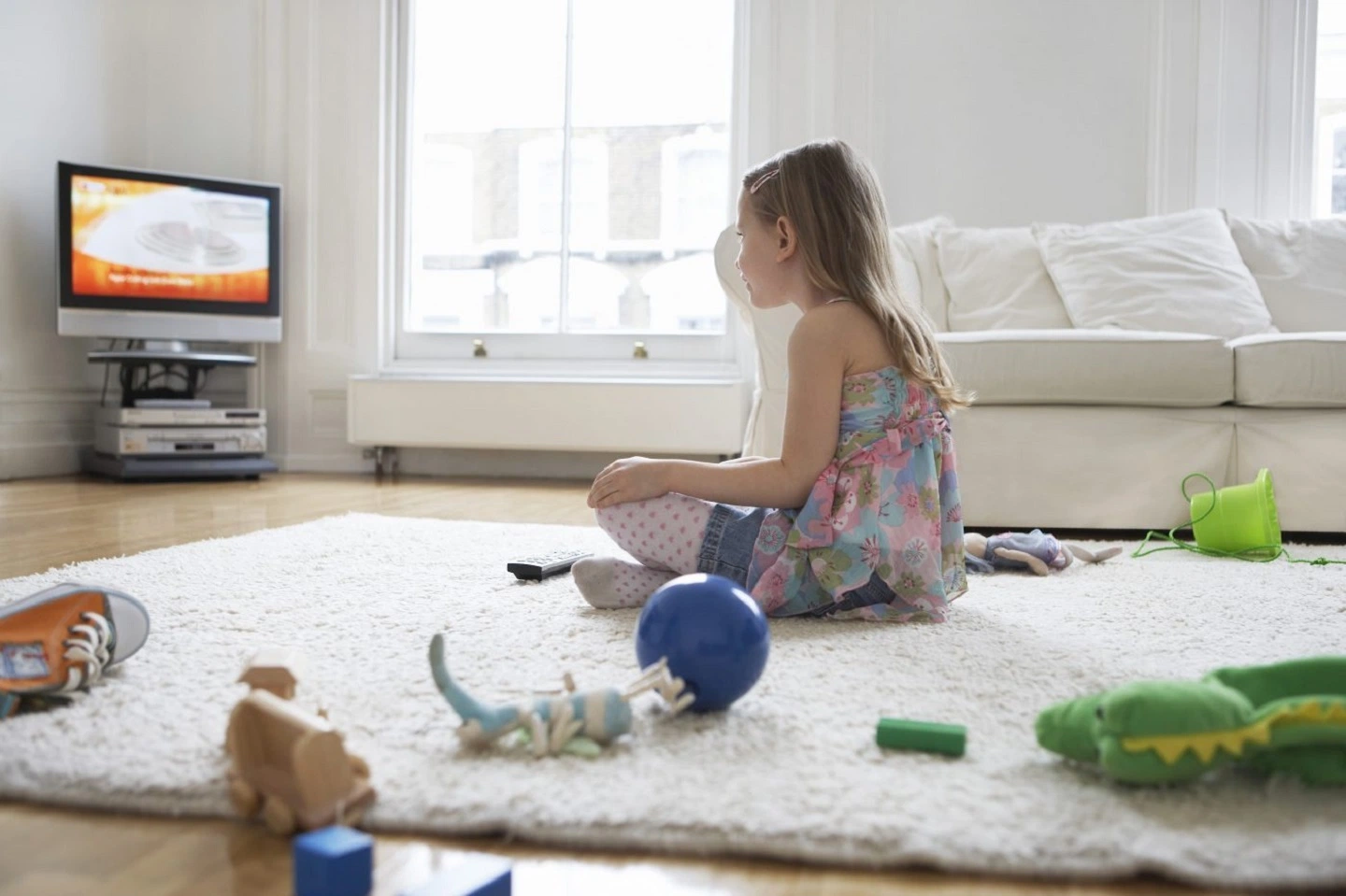
When selecting furniture, look for pieces designed with children in mind:
- Kid-Sized Furniture: Consider kid-sized tables and chairs for art and play activities. These can be both functional and adorable.
- Convertible Furniture: Invest in convertible furniture like a sleeper sofa for sleepovers or a coffee table with a chalkboard top for creative play.
- Washable Cushions: If you have upholstered furniture, choose pieces with removable and washable cushion covers for easy cleaning.
7. Interactive Zones

Encourage creativity and learning by incorporating interactive zones into your living room design:
- Reading Nook: Create a cozy reading nook with comfortable seating and a well-stocked bookshelf. Include soft cushions and good lighting to make it inviting.
- Art Corner: Set up an art corner with a small table, art supplies, and a bulletin board to proudly display your child’s masterpieces.
- Technology Station: If your family uses technology, designate a tech station with charging stations and a comfortable spot for screen time.
8. Indoor Plants and Nature
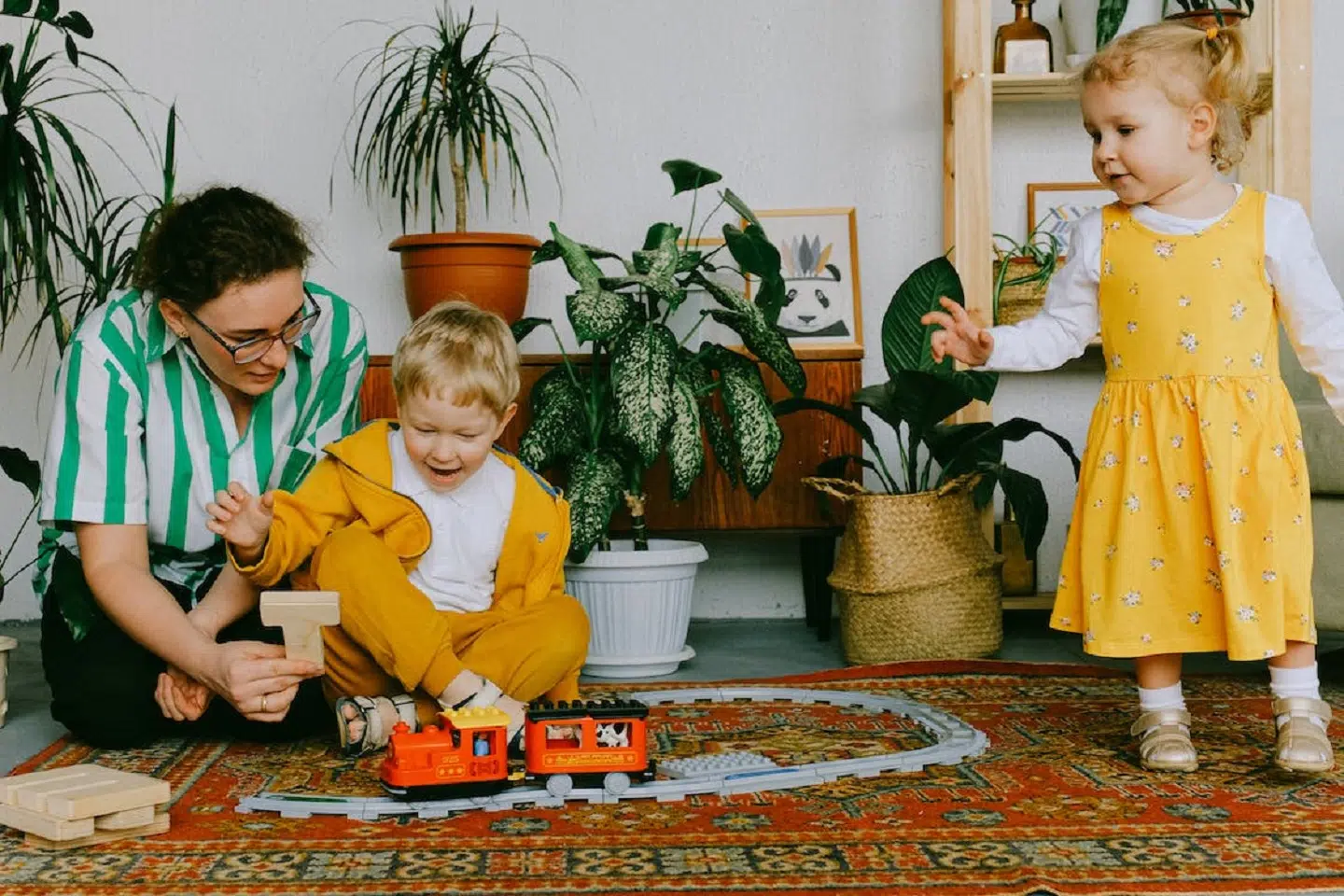
Bringing a touch of nature indoors can benefit both children and adults:
- Houseplants: Introduce child-friendly houseplants like snake plants and spider plants. Teach children about plant care and responsibility.
- Natural Materials: Incorporate natural materials like wood and stone to connect your living room to the natural world. Wooden furniture and décor elements can add warmth and texture.
Don’t be confused, if you don’t know how to revamp your living room. Excellent ideas are suggested here.
9. Family Involvement

Involve your children in the design process:
- Personalization: Let your child personalize their space with artwork, photos, or items that are meaningful to them.
- Teaching Opportunities: Use the design process as a teaching opportunity to discuss concepts like color, organization, and creativity with your child.
10. Adaptability for Growth
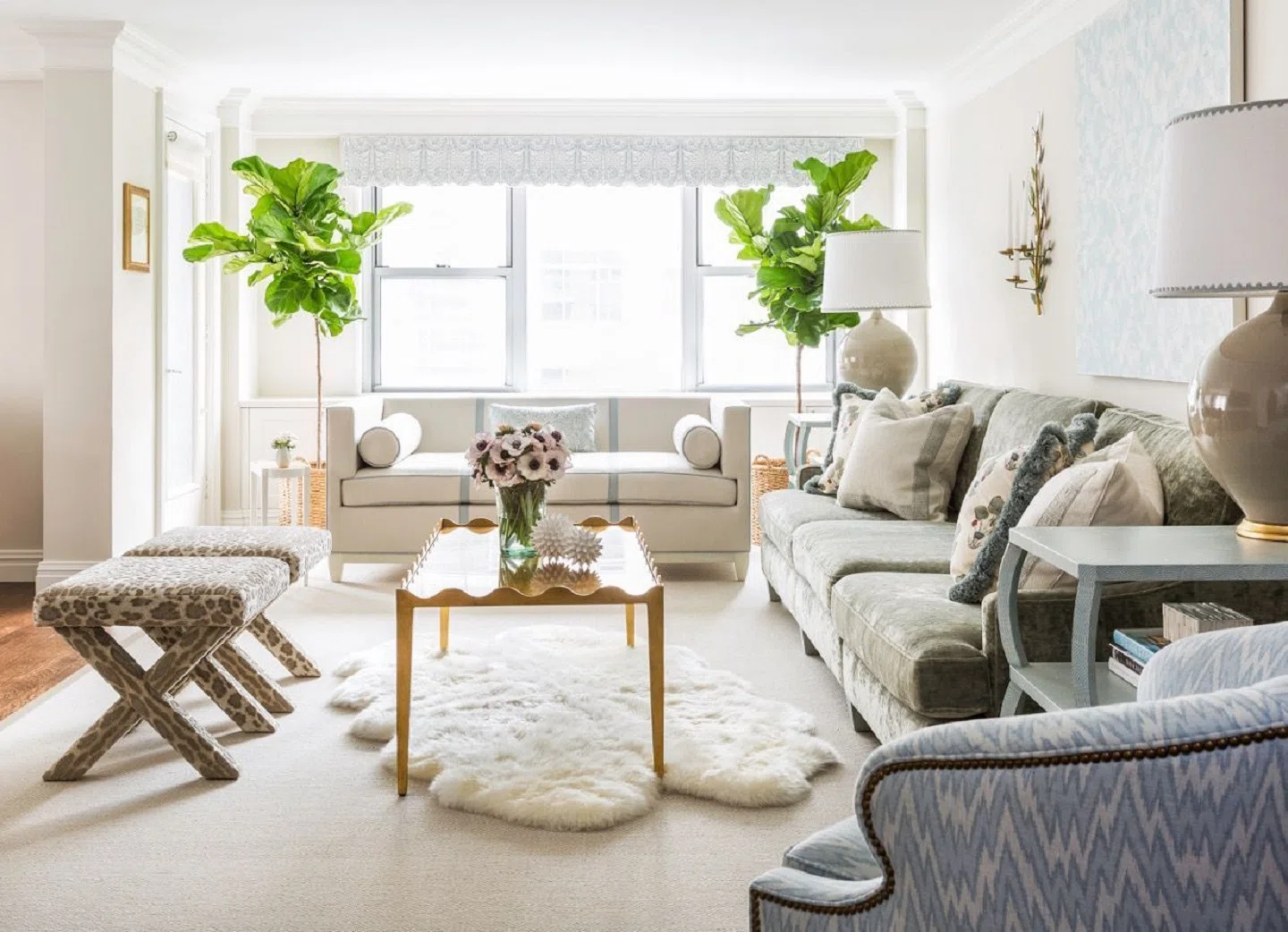
Consider the future when designing a kid-friendly living room. Children grow, and their needs change, so plan for adaptability:
- Flexible Furniture: Choose furniture that can adapt as your child grows, such as cribs that convert into beds and adjustable shelving.
- Modular Design: Opt for modular furniture and décor that can be reconfigured for different stages of childhood.
- Transitional Décor: Update décor to match your child’s evolving interests, like changing wall art or accent colors.
- Study Space: Create a dedicated study area with good lighting for homework and projects as your child enters school.
- Teen-Friendly Updates: Finally, Plan for updates like more mature colors and additional seating for older children or teenagers.
Conclusion
Designing a kid-friendly living room that is both stylish and functional is achievable with careful planning and consideration of safety, durability, layout, color, storage, furniture, and interactive zones. By creating a space that accommodates the needs and interests of both children and adults, you can foster a welcoming environment where family members can relax, learn, and bond together. A well-designed, kid-friendly living room can become the heart of your home, where cherished memories are made, and the joys of family life are celebrated.



Did you find what you were looking for?